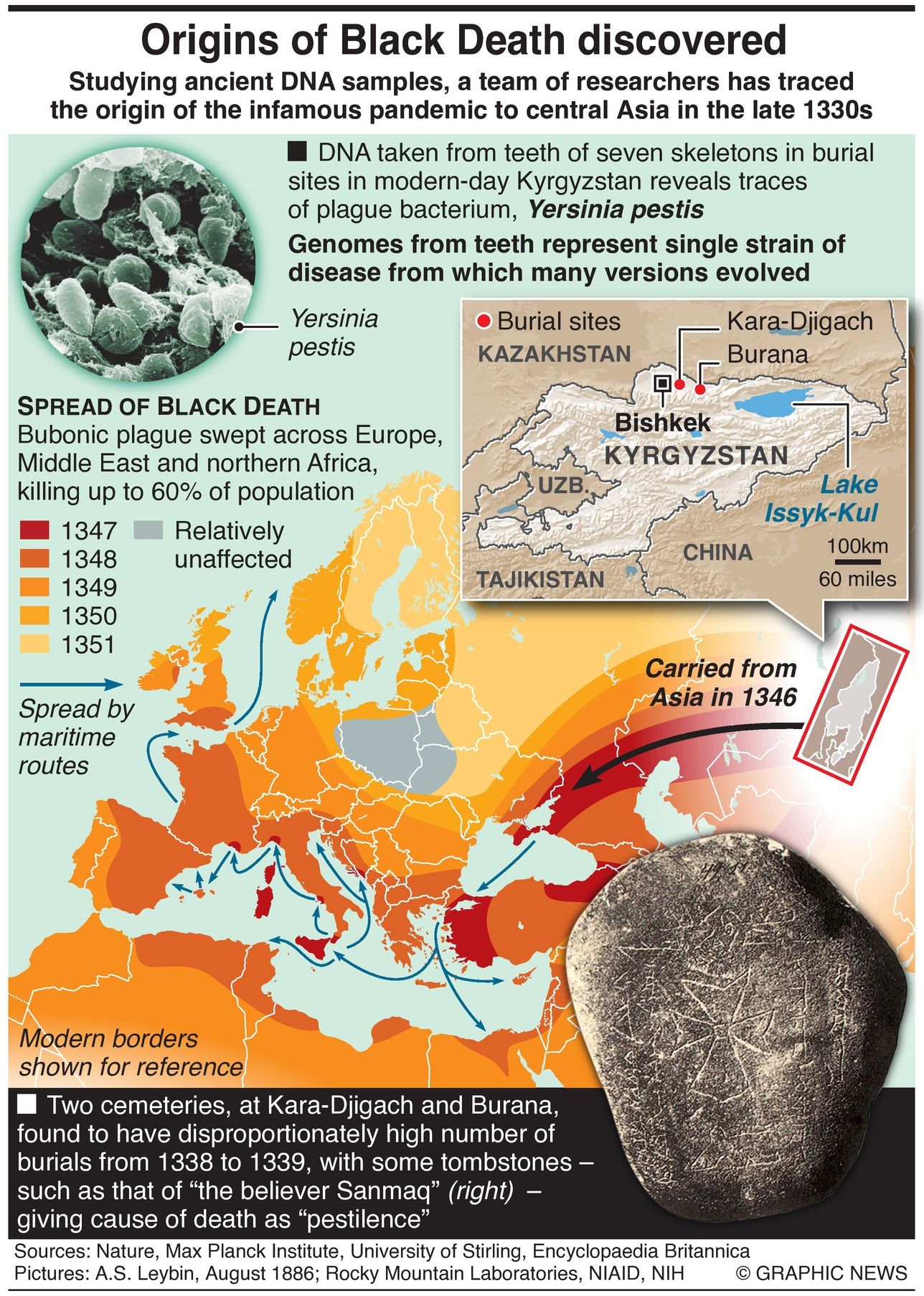
The Black Death was first detected in the 1330s and was the initial wave of a nearly 500-year-long pandemic termed the ‘Second Plague Pandemic’. It swept across Europe, the Middle East, and northern Africa, killing up to 60% of the population.
But despite being one of the largest infectious disease catastrophes in human history, its geographic and chronological origin has remained elusive, until now.
Writing in the prestigious journal Nature, scientists from the Max Planck Institute, the University of Tubingen, and the University of Stirling, have uncovered the first historical proof that the late medieval bubonic plague originally began in modern-day Kyrgyzstan in the late 1330s.
Researchers were able to analyze ancient DNA taken from the teeth of seven skeletons discovered in burial sites in the Tian Shan region. The sequencing showed they contained Yersinia pestis, the plague bacterium.
Genomes from the teeth represent a single strain of the disease from which many versions evolved.
Also, archaeological evidence from the cemeteries of Kara-Djigach and Burana, located in the Tian Shan region, identified a disproportionately high number of burials between 1338 and 1339 and a number of the tombstones noted the cause of death as ‘pestilence’.
Professor Johannes Krause of the Max Planck Institute said “Just like Covid, the Black Death was an emerging disease and the start of a huge pandemic that went on for some 500 years. It’s very important to understand actually in what circumstances did it emerge.”





